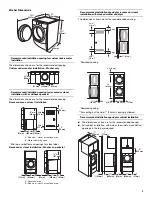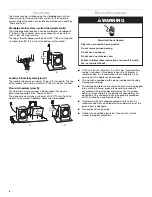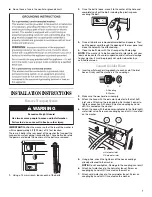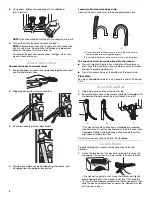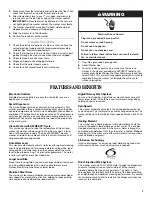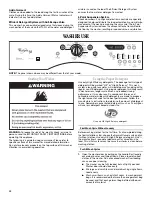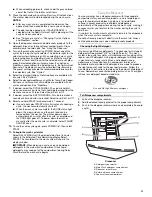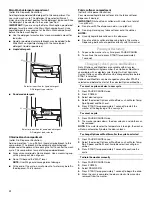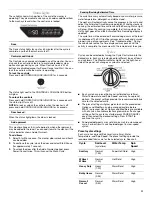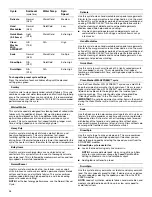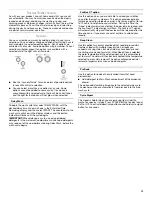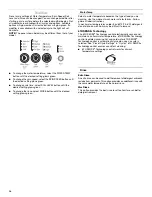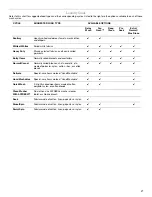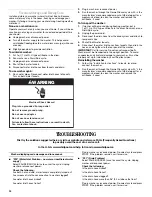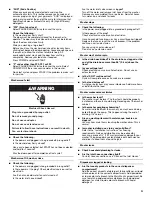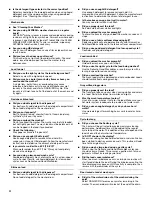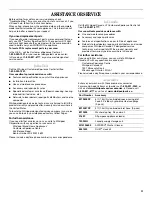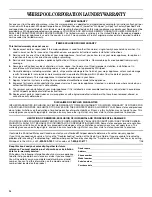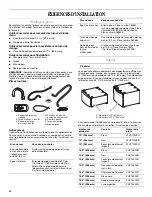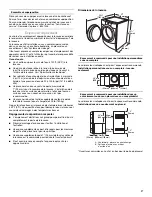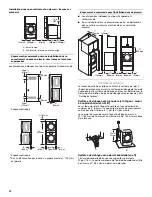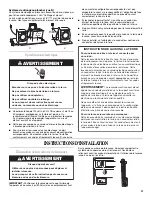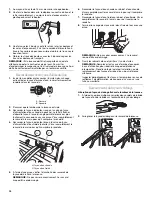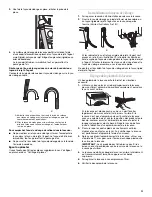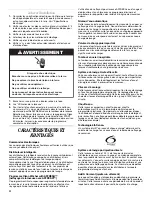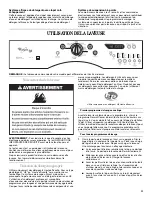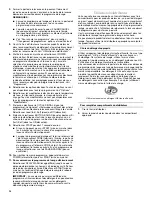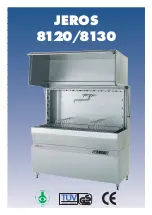
19
WASHER CARE
Cleaning Your Washer
The Washer Maintenance Procedure should be performed on a
monthly basis.
Cleaning the
d
oor seal
1.
Open the washer door and remove any clothing or items from
the washer.
2.
Inspect the gray colored seal between the door opening and
the basket for stained areas. Pull back the seal to inspect all
areas under the seal and to check for foreign objects.
A
A. Seal
3.
If stained areas are found, wipe down these areas of the seal,
using the procedure that follows.
a)
Mix a dilute solution, using
3
/
4
cup (177 mL) of liquid
chlorine bleach, and 1 gal. (3.8 L) of warm tap water.
b
)
Wipe the seal area with the dilute solution, using a damp
cloth.
c)
Let stand 5 minutes.
d
)
Wipe down area thoroughly with a dry cloth and let the
washer interior air dry with door open.
IMPORTANT:
■
Wear rubber gloves when cleaning for prolonged periods.
■
Refer to the bleach manufacturer’s instructions for proper use.
Washer Maintenance Proce
d
ure
This washer has a special cycle that uses higher water volumes
and steam, in combination with AFFRESH
®
washer cleaner or
liquid chlorine bleach, to thoroughly clean the inside of the
washer.
NOTES:
■
Read these instructions completely before beginning the
cleaning process.
■
If necessary, the cleaning cycle may be interrupted by
pressing the Pause/Cancel button. However, this will not
immediately stop the cycle. The machine will display “int”
(interrupt) and continue with several rinse and drain steps to
ensure that all remaining bleach is rinsed from the washer.
Begin proce
d
ure
1.
Open the washer door and remove any clothing or items from
the washer.
2. Using the AFFRESH
®
washer cleaner (Recommen
d
e
d
):
Add one AFFRESH
®
washer cleaner tablet to the washer
drum.
If using liqui
d
chlorine
b
leach:
Open the dispenser drawer and immediately add
2
/
3
cup
(160 mL) of liquid chlorine bleach to the bleach compartment.
NOTE:
Do not add any detergent to this cycle. Use of more
than
2
/
3
cup (160 mL) of bleach will cause product damage
over time.
3.
Close the washer door and dispenser drawer.
4.
Select the CLEAN WASHER WITH AFFRESH
™
cycle.
5.
Press START.
NOTE:
The basket will rotate, then the door will unlock, lock
again, and then the cycle will continue.
■
The machine will bring in some inlet water, and the basket
will rotate while the washer runs a short sensing cycle.
This will take approximately 3 minutes.
6.
The cycle will determine whether clothing or other items are in
the washer.
a)
b
)
If no items are detected in the washer, it will proceed to
Step 7.
If any items are detected in the washer, “rL” (remove load)
will be displayed, and the WASH and CONTROL LOCK
lights will remain lit. The door will unlock. Open and
remove any garments in the wash drum.
■
Press PAUSE/CANCEL to cancel the failure code.
Then repeat steps 3, 4, and 5 to start the cycle again.
7.
Once the cycle has begun, allow the cycle to complete.
8.
After the cycle is complete, leave the door open slightly, to
allow for better ventilation and drying of washer interior.
Always
d
o the following to maintain washer freshness
■
Use only HE High Efficiency detergent.
■
Leave the door slightly open after each cycle to allow for
better ventilation and drying of washer interior.
■
Repeat the cleaning procedure monthly, using one AFFRESH
®
tablet or
2
/
3
cup (160 mL) of liquid chlorine bleach.
■
If the procedure does not sufficiently improve the machine
freshness, evaluate your installation and usage conditions for
other causes.
Cleaning the exterior
Use a soft damp cloth or sponge to wipe up any spills.
Occasionally wipe the outside of your washer to keep it looking
new. Use mild soap and water. Do not use abrasive products.
Cleaning the
d
ispenser
d
rawer
The dispenser drawer is removable for easy cleaning.
1.
Unlock the dispenser drawer by pressing the Release Lever in
the Prewash compartment. See “Using the Dispenser.”
Remove the drawer.
2.
Remove the inserts (the siphon from the softener and bleach
compartments and the detergent selector).
3.
Wash the parts under running water.
4.
Replace the inserts and return the dispenser to the drawer.
Water Inlet Hoses
Replace inlet hoses after 5 years of use to reduce the risk of hose
failure. Periodically inspect and replace inlet hoses if bulges,
kinks, cuts, wear, or leaks are found.
When replacing your inlet hoses, record the date of replacement.

